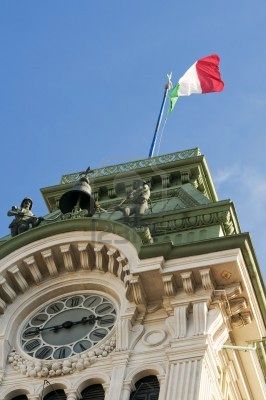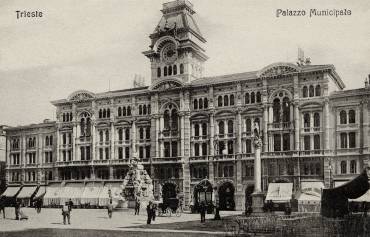Palazzo del Municipio (1858 - 1863)
piazza dell'Unità d'Italia
Arch. Giuseppe Bruni
Immediately after the decision to bury the old Mandracchio (1858-1863), the square was the subject of a total redesign. The idea of a completely open space on the sea prevailed, surrounded by buildings and with the town hall placed as a front base, with the consequent demolition of the walls and buildings that then closed the square on the sea side. Several houses, a loggia and some buildings stood on the site designated to raise the Palazzo Comunale.
In 1875 the architect from Trieste Giuseppe Bruni won the tender for the design of the new building. The new building was formed by a single monumental body dominated, in the central part, by a tower. Bruni put all his skill to recall different architectural forms in this work, reconciling monumentality and grandeur, without somehow disturbing the harmony with the other buildings already built.
The town hall building is dominated by the bell tower on which two moors are installed, named amicably by Trieste from Micheze and Jacheze (from the Slovenian Mihec and Jakec), also designed by Bruni, who since 1876 mark the passage of time every quarter of an hour, as well as the civic bell with the city halberd.
The two figures that today strike on the town hall are not the original statues, currently exhibited at the castle of San Giusto after the restoration to which they were subjected in 2006 due to the intense wear and tear, but faithful copies identical to the previous ones.
The palace was not immediately liked by the Triestini who began to label it with funny and original names to identify it. The most famous, and still commonly used today is Palazzo Cheba or Palazzo Gabbia, for the shape that resembles a huge bird cage, but also Palazzo Sipario because with its imposing size it was able to hide the ruins and ugliness of the houses of Cittavecchia who were behind him.
It was from the central balcony of the Trieste Town Hall that on September 18, 1938, speaking to people in Piazza Unità, Benito Mussolini announced the promulgation of fascist racial laws in Italy.










